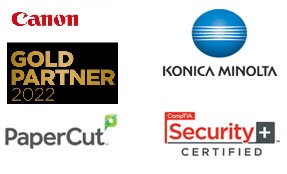Okay, so it’s your first day on the job. New offices, co-workers, position. In fact, you are pretty excited to get started, however you may not be as technically skilled as your co-workers. You need to photocopy a document.
You never did like copiers, printers or multifunction equipment because you could never quite work them properly, but don’t give up, there is still hope for you yet.
They say that knowing your enemy is half the battle, but the copier should not be your enemy. Just by learning what makes them tick, and what goes on when you copy something will give you a better understanding of the machine and an easier time with its operation.
So, OK, what exactly is going on when you decide to hit “start” on the photocopier?
Well, oddly enough, it has a lot to do with static electricity. It may seem nearly impossible for that to be the case but think about this. When you photocopy something, you are typically using toner. Toner is not ink, nor is it a quartet of magical imps with crayons and extremely fast hands!
It is actually a ridiculously fine coloured powder that “gets charged” with static electricity.
Inside every photocopier, there is a set of cylindrical drum units that allow the toner to gain charge, attracting the fine powder to the drums surface.
Now, obviously, not every picture is going to be completely black, cyan, yellow or magenta so there has to be a way to keeps parts of the paper white. This is where the drums ability to use a selective charge really comes in handy.
The copy or print image is “written” onto the drum by means of a laser charging selective areas of the drums surface. This selective charge happens through photo sensitivity or light for the uninitiated.
When the paper finally comes through, it is also statically charged, so the toner becomes attracted to the paper.
The toner is then “melted” onto the paper by means of a heated fuser unit, since the toner particles themselves are very sensitive to heat.
Another thing to remember; Toner is NOT ink!
Sometimes referred to as dry ink, but again, it’s not really ink at all. The toner itself is actually stuck to slightly larger beads that have a positive charge inside the toner cartridge.
Once the toner beads are spread over the drum, the particles of the toner are more attracted to the positively charged areas on the cylinder.
This causes them to stick to the drum (again with static electricity). Once the statically charged paper rolls on through, the particles jump to the paper, but since toner particles still contain charge, they could still fly off the paper.
In order to make sure the particles stay, the toner particles are made with plastic in them that becomes melted onto the paper once the toner is heated. It’s certainly not leaving the paper now.
Simply by knowing what is going on inside that photocopier can greatly help when trying to figure out what is wrong with it. Not every copier is going to have problems so do not let that fool you. Maybe you are not really looking for a full time purchase.
Maybe you are just looking to rent to get the feel of a new photocopier. If you are a small business just starting up, you will need as much info on all of the office equipment you can get, don’t be afraid to ask the question “how can I speed this process up?”
Also, remember that renting can help make things a lot easier for you. Instead of your company having to spend money on repairs, let the rental company take care of that “toner cartridge problem”, or annoying “paper jam”.
